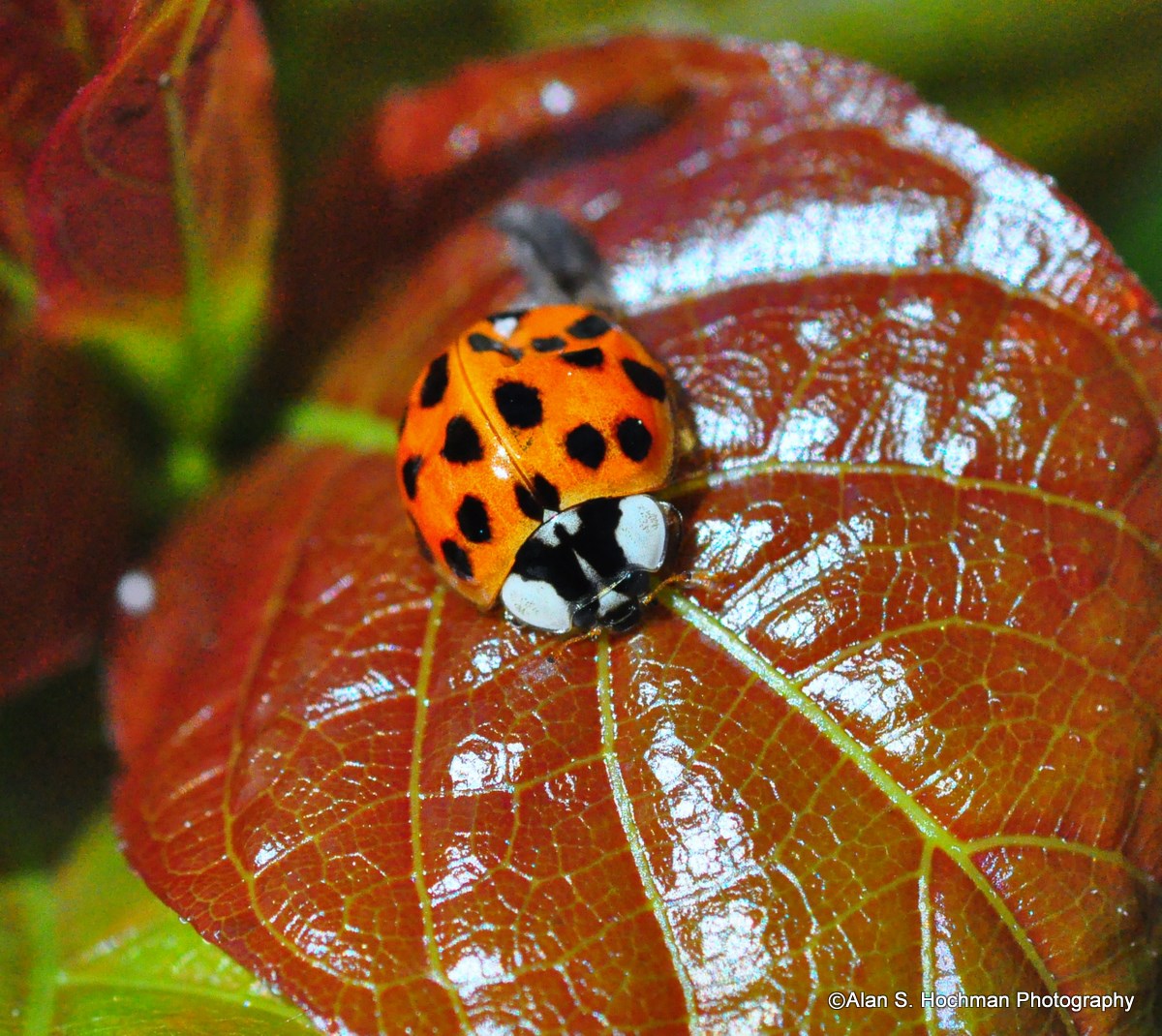WILDLIFE PHOTOGRAPHY – ENCHANTED FOREST PARK, FL
The name “ladybird” originated in the Middle Ages when the insects were known as the “beetle of Our Lady”. They were named after The Virgin Mary, who in early religious paintings was often shown wearing a red cloak. The spots of the seven spot ladybird were said to symbolise seven joys and seven sorrows. Common names in other European languages have the same association (the German name Marienkäfer translates to “Marybeetle” or ladybeetle). In the USA the name was Americanized to “ladybug”.
Ladybug Trivia:
Coccinellidae is a family of beetles, known variously as ladybirds (UK, Ireland, Australia, Pakistan, South Africa, New Zealand, India, Malta, parts of Canada), or ladybugs (North America). Scientists increasingly prefer the names ladybird beetles or lady beetles, as these insects are neither birds nor bugs. Lesser-used names include lady clock, lady cow, and lady fly.
They are small insects, ranging from 1 mm to 10 mm (0.04 to 0.4 inches), and are commonly yellow, orange, or scarlet with small black spots on their wing covers, with black legs, head and antennae. A very large number of species are mostly or entirely black, grey, or brown and may be difficult for non-entomologists to recognize as coccinellids (and, conversely, there are many small beetles that are easily mistaken as such, like tortoise beetles).
Coccinellids are found worldwide, with over 5,000 species described, more than 450 native to North America alone.
Coccinellids are often brightly colored to ward away potential predators. This phenomenon is called aposematism and works because predators learn by experience to associate certain prey phenotypes with a bad taste (or worse). Mechanical stimulation (such as by predator attack) causes “reflex bleeding” in both larval and adult ladybird beetles, in which an alkaloid toxin is exuded through the joints of the exoskeleton, deterring feeding. Ladybugs, as well as other Coccinellids are known to spray a toxin that is venomous to certain mammals and other insects when threatened.
A common myth is that the number of spots on its back indicates its age.

Love your subject matter
You have some wild pictures
Rusty, was that a question or a comment? lol
How do you find these places to shoot your photos?
Harmonia axyridis
Show off! lol 🙂
If the number of spots is the age – it would have to be in months, not years. If not, this is an old insect. 🙂
You have a great sense of photography. As for me, if I were to take the picture of a ladybug, I would make it so magnified that almost the whole picture area is covered because that’s how I see the ladybug. It also has a lot of sentimental value to me since from my childhood.